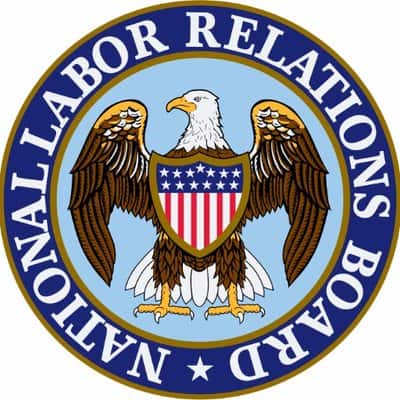Unions Defend Job-Killing Regulation

 A holdover Obama regulation is costing businesses billions of dollars and workers millions of job opportunities. A survey conducted by the International Franchise Association found that the Obama joint-employer standard already costs businesses between $17 billion and $33.3 billion annually. It also represents a roadblock to job creation, with between 194,000 and 376,000 potential jobs eliminated.
A holdover Obama regulation is costing businesses billions of dollars and workers millions of job opportunities. A survey conducted by the International Franchise Association found that the Obama joint-employer standard already costs businesses between $17 billion and $33.3 billion annually. It also represents a roadblock to job creation, with between 194,000 and 376,000 potential jobs eliminated.
In 2015, a decision by the National Labor Relations Board (NLRB) created a new joint-employer standard, which governs when two or more employers may be found to jointly bear collective bargaining obligations and liabilities with respect to one or more employees.
For decades, multiple employers would be considered joint employers if they both exercised direct and immediate control over employees’ essential work conditions—like pay and supervision. In a decision called Browning-Ferris, the NLRB adopted a broad and vague standard where a joint-employer determination can be made when one company merely exercises “indirect” control over work conditions or possesses “unexercised potential control.” These terms were never properly defined and presented employers with immense uncertainty.
Thankfully, the current NLRB is diligently working to restore the commonsense definition. In 2018, the agency proposed a rule to restore the traditional joint-employer standard.
Despite the empirical evidence that the Obama rule harms employers and workers, Democrats in Congress and labor unions have strongly opposed bringing back the tried and true joint-employer standard.
Primarily, the opposition to the rule has manufactured ethics concerns to derail efforts to return the traditional joint-employer standard. This campaign has already delayed a fix to the problem.
Early in the Trump administration, the NLRB issued a decision called Hy-Brand, which restored the traditional standard, but it was short lived. Ultimately, the Board vacated its decision in Hy-Brand. Spurring this move was the application of a novel recusal standard by the NLRB Inspector General David Berry.
The IG issued a report that determined Board member William Emanuel should have recused himself from the Hy-Brand decision because his former employer was involved in the Browning-Ferris case. But that is an improper view of Executive Order 13770, which requires Board members to not participate in “any particular matter involving specific parties that is directly and substantially related to [their] former employer.” Emanuel’s former employer was not a party involved in Hy-Brand and he should have been cleared to rule in this case.
IG Berry invented a novel legal theory to reach his conclusion. This unprecedented theory purported that since the deliberation in Hy-Brand was a continuation of the Browning-Ferris decision, the two separate and distinct cases were actually the same.
The Service Employee International Union (SEIU) echoes these ethics concerns in their comments on the NLRB’s proposed rule. This is amusing because when former SEIU Associate General Counsel Craig Becker was a member of the Board, he argued he did not need to recuse himself from cases involving SEIU local unions. Becker argued that SEIU International, his employer, is a separate and distinct entity from local unions. IG Berry accepted Becker’s legal theory hook, line, and sinker.
But SEIU International and locals are closely linked. The SEIU constitution grants considerable authority to the International to exercise control over its local unions. For example, during Becker’s time at SEIU, the International launched a takeover of a local union in which it seized its financial assets and removed local officials from payroll. The SEIU International also collects massive amounts of money from local unions. SEIU International’s Per Capita tax, the amount local unions must kick up to the parent union, amounts to almost $300,000,000 annually.
Another bogus argument against restoring the traditional joint employer standard comes from the AFL-CIO. In their comments, they claim that there is no reasoned basis to the proposed rule because “[the] Board has only decided a small handful of cases applying the [Browning-Ferris] standard.” Therefore, the AFL-CIO contends the Board cannot know if there is any need to make changes to the joint employer standard.
For one, as noted above, the Browning-Ferris decision has caused considerable economic harm. Secondly, the AFL-CIO is off base when it claims that there have only been a few joint employer cases. Since the NLRB General Counsel Richard Griffin articulated the new and vague joint employer standard in 2014, there has been an increase in joint employer allegations. For example, there has been a 93.44 percent increase in joint employer allegations against franchisors and franchisees from 2014 to 2018 when compared to charges brought between 2010 and 2014.
Ultimately, the NLRB’s proposed rule is desperately needed. And the arguments against doing so are either misleading or disingenuous. The Browning-Ferris joint employer standard has already caused considerable harm to the economy. It is time to restore the traditional joint employer standard that encourages entrepreneurship and job creation.